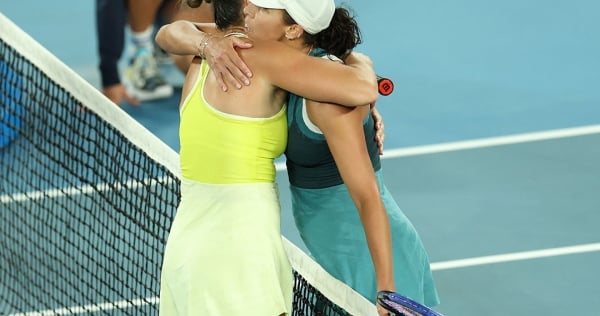“I was on the back foot all the time,” Sabalenka said of the first set. “I think she played, like, super aggressive. It seemed like everything was going her way. I was just trying to put the ball back. Couldn’t really play my aggressive tennis.”
Keys’ forehand averaged 16km/h faster than Sabalenka’s, and increased in speed as the match progressed, jumping from an average 127km/h in set one to 133km/h in the third set.
In the third set, she was also playing her forehand with more spin than Sabalenka, whose average forehand speed dropped 10km/h compared with what she was producing against Paula Badosa in the semifinals.
Timing is everything
There’s a saying in tennis that it’s not how many points you win, but which points you win.
And that was true of Keys, who managed to produce her best tennis at crucial junctures.
During the fifth game of the third set, the scoreboards inside Rod Laver Arena showed Keys and Sabalenka had won 74 points each. Two games later, scores were locked at one set all, 3-3, 30-30.
At that point, Keys scorched two winners to hold for 4-3.
She repeated the feat when scores were tied at 5-5, 30-30 – the first Australian Open women’s singles final to go this deep into a third set since 1981. Two more winners from Keys helped her hold for 6-5 and put her on the brink of victory.
Here we saw the advantage that comes with serving first in a set – Sabalenka was always playing catch up, and in the 12th game, she couldn’t stay with Keys.
A final forehand winner from the American sealed an emotional victory.
This article was originally published by a ausopen.com . Read the Original article here. .

